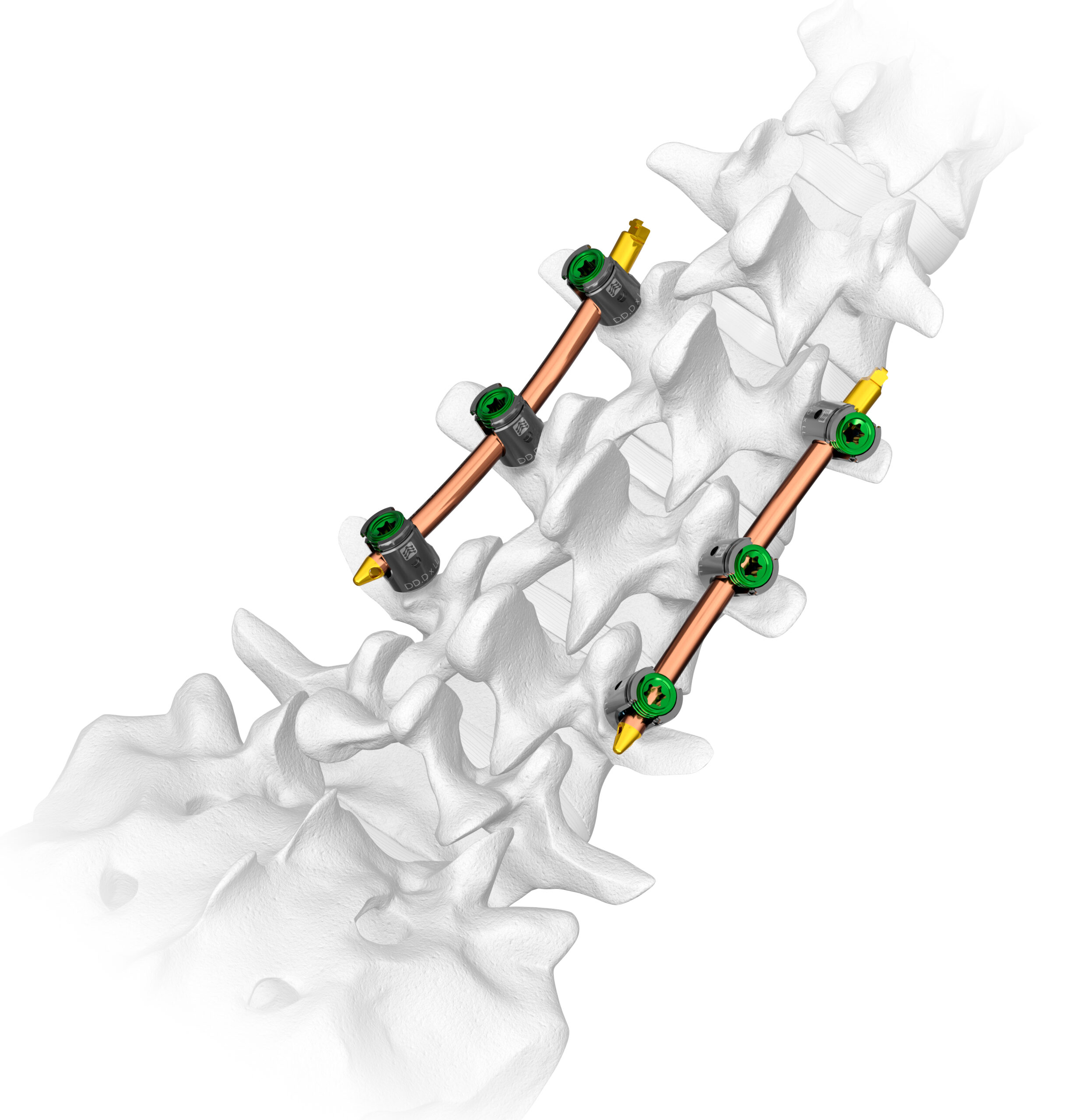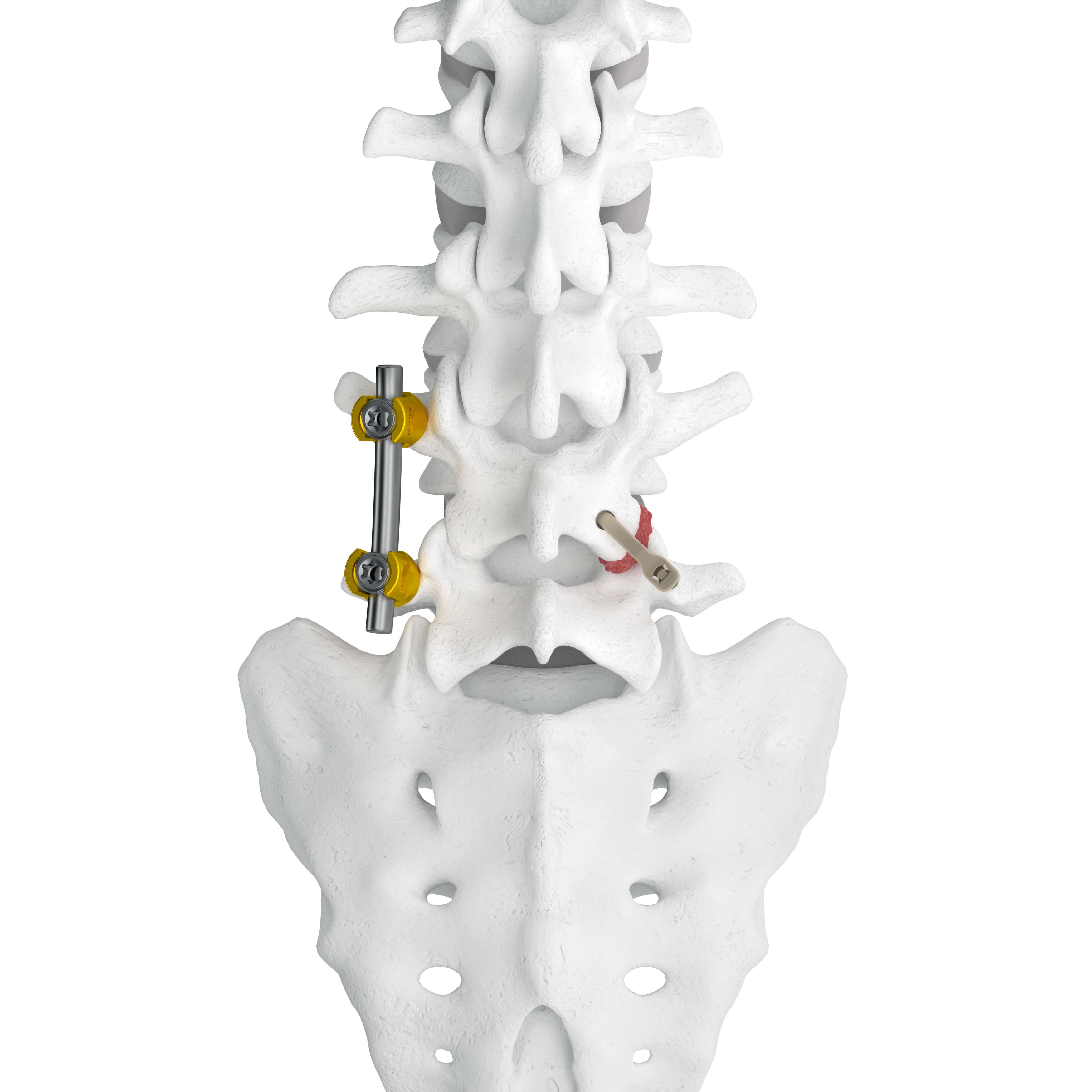Revolutionary Solution
for Posterior Fixation
for Posterior Fixation

Pierce Nunley M.D., Shreveport, LA
“Karma is not just another iteration of a procedure or device. This is innovation in the true sense of the word — it is disruptive and improves the lives of our patients.”
Conventional Fixation
Traditional fixation achieves clinical goals but often with unintended consequences.
- Rigid fixation can lead to:
- Stiffness of the instrumented segments1
- Stress concentration of implants1
- Stress shielding of interbody space
- Adjacent segment disease and hardware related discomfort may occur2
- Fixation and stability in patients with poor bone quality can be challenging
- Screws loosening rates are >60% in osteoporotic bone3
- Mal-positioning of screws can lead to neurological damage and reoperations


Terrence Crowder M.D., Gilbert, AZ
“Those with severe leg pain (neurogenic claudication or radiculopathy) and degenerative spondylolisthesis are ideal for this device. It’s fantastic that…”
Revolutionary Fixation
Karma achieves the clinical goals of traditional fixation without the unintended consequences.
- Circumferential PEEK band immobilizes and compresses the facet joint to facilitate fusion
- Utilizes cortico-pedicular corridor for posterior fixation
- Patient centric: metal-free, low radiographic artifact, low-profile construct
- Ideal for outpatient surgery and the ASC

* See the surgical technique guide for detailed procedure

Brian Anderson, M.D., MHA, Lehi, UT
“The Karma fixation system represents a significant advancement in the treatment of degenerative spondylolisthesis”
- Liu et al. BMC Musculoskeletal Disorders (2018) 19:231 https://doi.org/10.1186/s12891-018-2132-5.
- Hsieh et al. BMC Musculoskeletal Disorders (2020) 21:100 https://doi.org/10.1186/s12891-020-3111-1.
- Kafchitsas et al. The impact of surgical fixation technique on pedicle screw anchorage; SENSE Presentation June 2022 Literature Review 43 full papers Reviewed